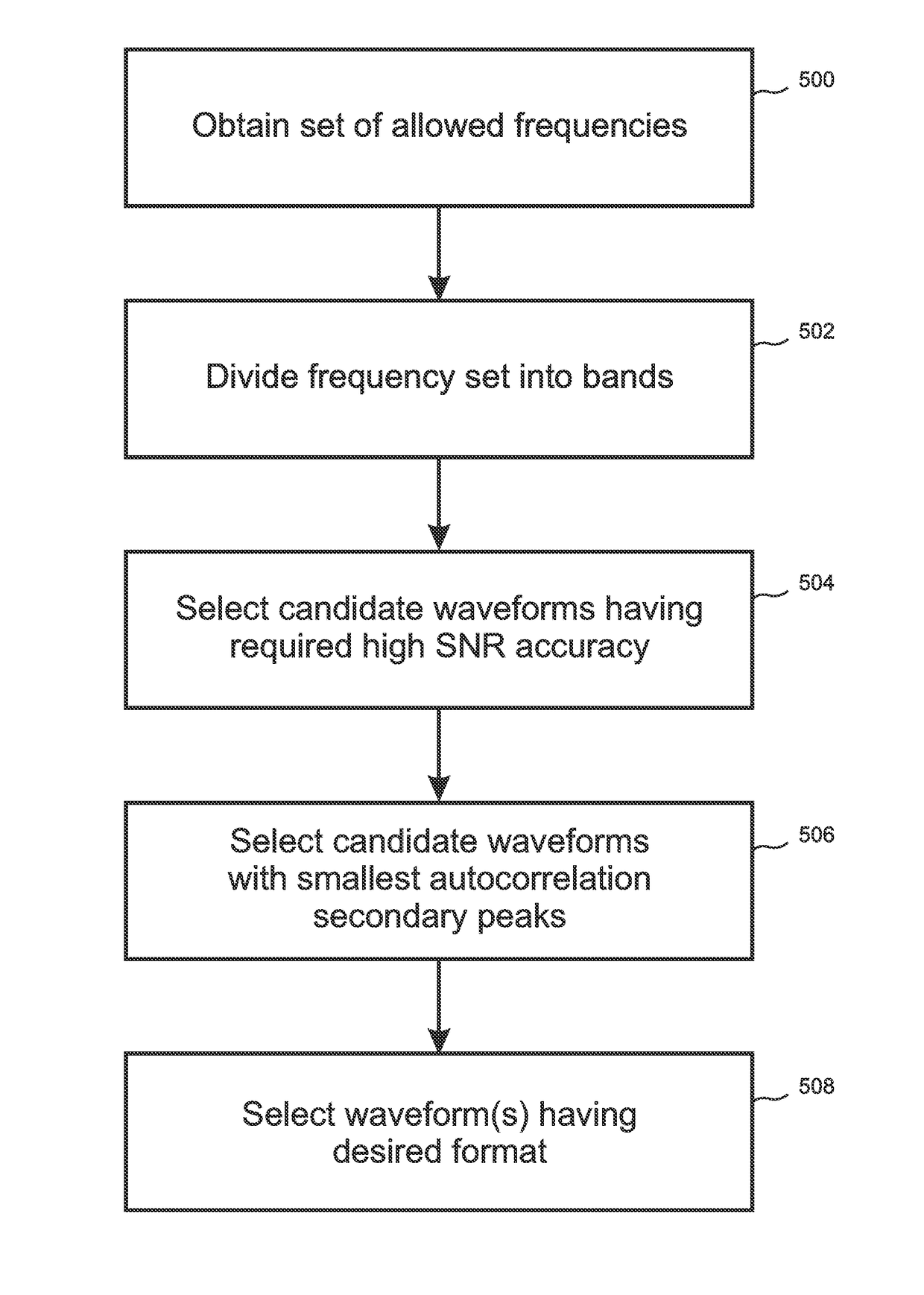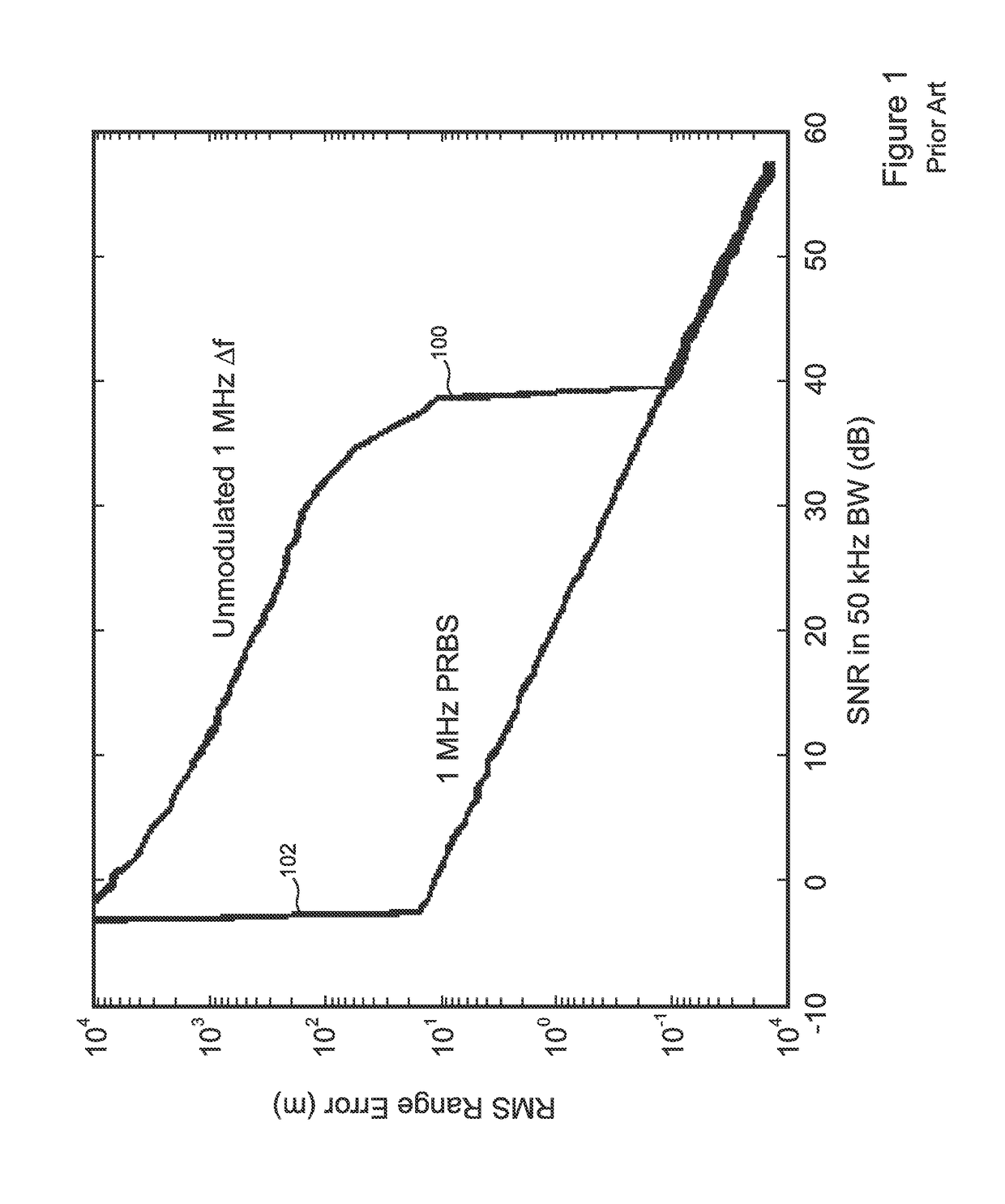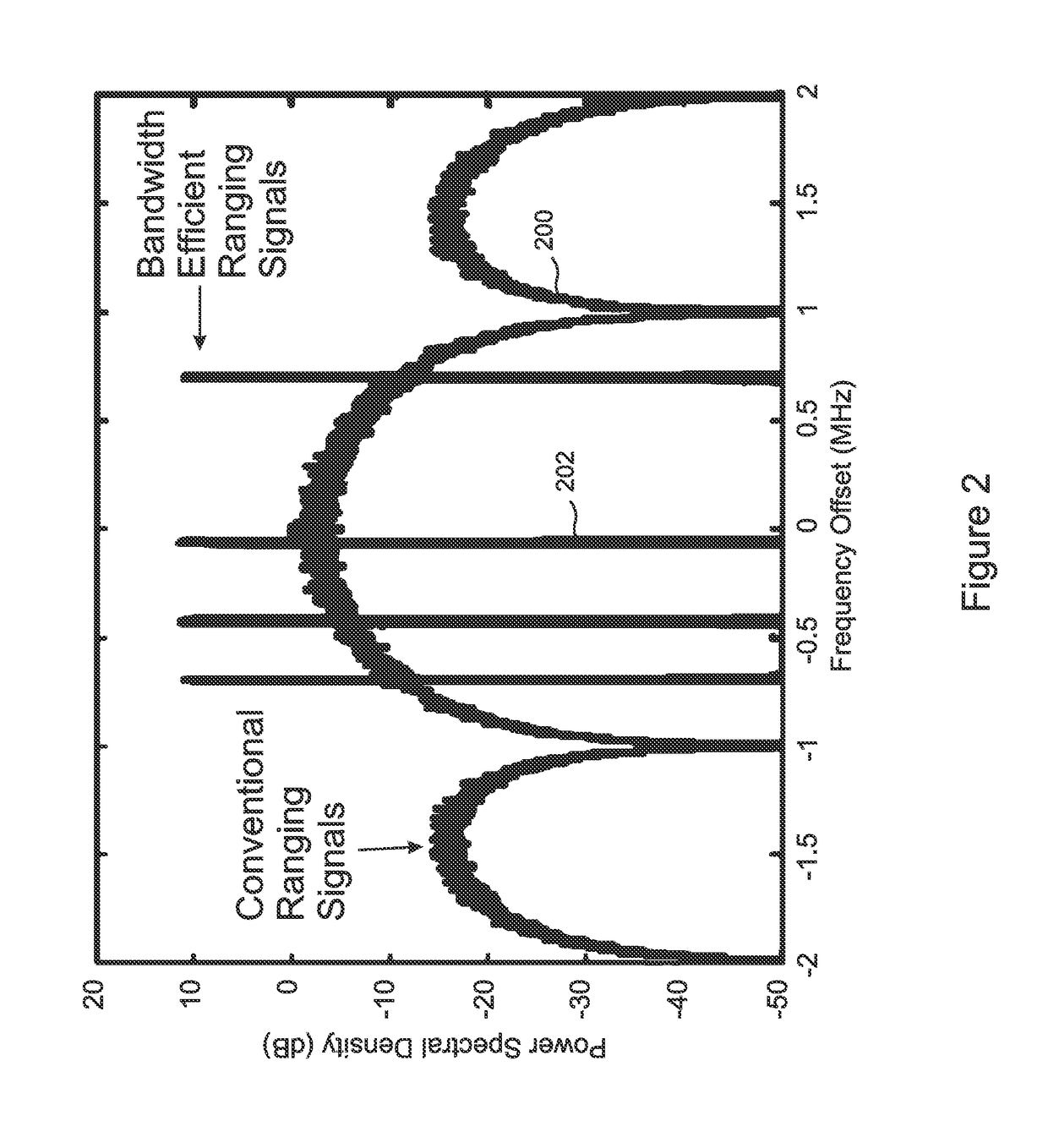Method of designing bandwidth efficient ranging waveforms
a bandwidth efficient, waveform technology, applied in the field of ranging, can solve the problems of high-accuracy ranging waveforms, method of designing optimized discontinuous waveforms, and inability to obtain allocation of broad, contiguous spectral bands that would be suitable for broadcasting conventional, high-accuracy ranging waveforms, etc., to achieve moderate and low snr, the effect of accurate ranging at very high snrs
- Summary
- Abstract
- Description
- Claims
- Application Information
AI Technical Summary
Benefits of technology
Problems solved by technology
Method used
Image
Examples
Embodiment Construction
[0034]A method is disclosed of designing bandwidth-efficient, spectrally non-contiguous ranging waveforms that provide high ranging accuracy at moderate to low SNR's. In particular, the design method described herein provides waveforms that are usable in channelized bands, such as communications bands, which are too narrow for the use of conventional broadband ranging waveforms. In particular, the present method optimizes the autocorrelation functions of the ranging waveforms for good SNR threshold behavior, thereby producing bandwidth efficient ranging waveforms that are usable at low and moderate SNR's.
[0035]The bandwidth efficient ranging waveforms provided by the present invention comprise coherent transmissions in a plurality of noncontiguous spectral regions, and thereby provide high accuracy ranging using much less spectrum than conventional broadband navigation waveforms. Bandwidth efficient ranging waveforms can be designed to fit within available narrowband channels, and / o...
PUM
 Login to view more
Login to view more Abstract
Description
Claims
Application Information
 Login to view more
Login to view more - R&D Engineer
- R&D Manager
- IP Professional
- Industry Leading Data Capabilities
- Powerful AI technology
- Patent DNA Extraction
Browse by: Latest US Patents, China's latest patents, Technical Efficacy Thesaurus, Application Domain, Technology Topic.
© 2024 PatSnap. All rights reserved.Legal|Privacy policy|Modern Slavery Act Transparency Statement|Sitemap



